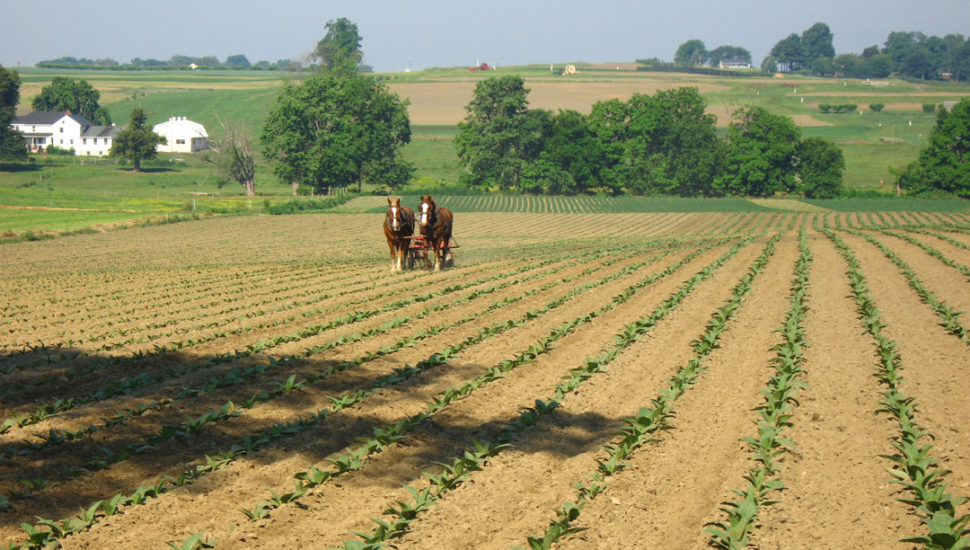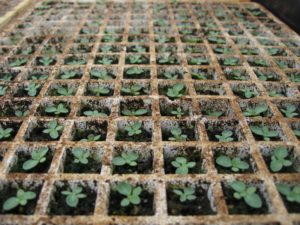County Ag Notes: Farmers in Four Chester County Townships Grow 10% of State’s Tobacco Crop

By Allison Duncan
Tobacco has been grown since Colonial times in Pennsylvania but the production of burley tobacco was not permitted during the 1938-2004 period when the federal government regulated tobacco production in the US.
The two local regional tobacco varieties Pennsylvania Type 41 and Maryland 609 which were developed specifically for our region continued to be produced during this period as they were not affected by the federal legislation.
Nationally tobacco production has changed dramatically as a result of the abandonment of federal control of production and prices and the major impact of the significant reduction in tobacco consumption.
As recently as 1974 almost 198,000 farmers produced 1.73 billion lbs. of tobacco whereas by 2012 there were only 10,014 farms producing only 766.6 million lbs. with 85% on farms with 25 acres (and much more!) of tobacco. Our Amish family farms are generally 4-5 acres in size and dependent on family labor.
Today burley tobacco probably represents 60-70% of the acreage grown in Chester County by the predominantly Amish farmers. The 2012 Ag Census estimates our total of 122 farms producing 2.2 million lbs. of tobacco on 867 acres, representing 10% of the state total. Most of the production is in Oxford, Nottingham, Cochranville and Honey Brook.
A good yield of high quality tobacco can gross as much as $5,000 to 6,000 per acre with price varying from around $2/lb. for burley to $4/lb. for PA Type 41 wrapping tobacco.
The crop is very labor intensive requiring at least 150-200 hours per acre as few operations can be mechanized. However the crop plays a vital role in providing a more assured income than milk which varies in price each month and has been at low levels recently.
Since many Amish farmers are dairy farmers, tobacco helps to sustain farm income. Virtually all the production is under contract for both weight and acres with a quality expectation and lower price for lower quality.

The very small seed is generally sown in greenhouses in the early spring and 8-10 weeks later the young plants are transplanted in to the field. Some growers with greenhouses supply transplants to other growers. The plants are not big enough to plant out until May and June.
A further article later in the year will cover the critical field operations, particularly “topping”, harvesting, curing, and stripping the tobacco – all very labor intensive operations. Stripping is pulling the leaves from the stem and sorting them into grades, and packing them in bales for delivery to a buying station. It is the most labor intensive task of all.
An industry 2-3 hour training program called GAP is helping growers use good management practices that have enabled farmers to be better stewards of the soil and avoid pesticide residues. The US is a major exporter of tobacco so the reputation for quality and sustainability has allowed US produced tobacco to be preferred by European tobacco companies.
Connect With Your Community
Subscribe to stay informed!
"*" indicates required fields










































![95000-1023_ACJ_BannerAd[1]](https://vista.today/wp-content/uploads/2023/03/95000-1023_ACJ_BannerAd1.jpg)





